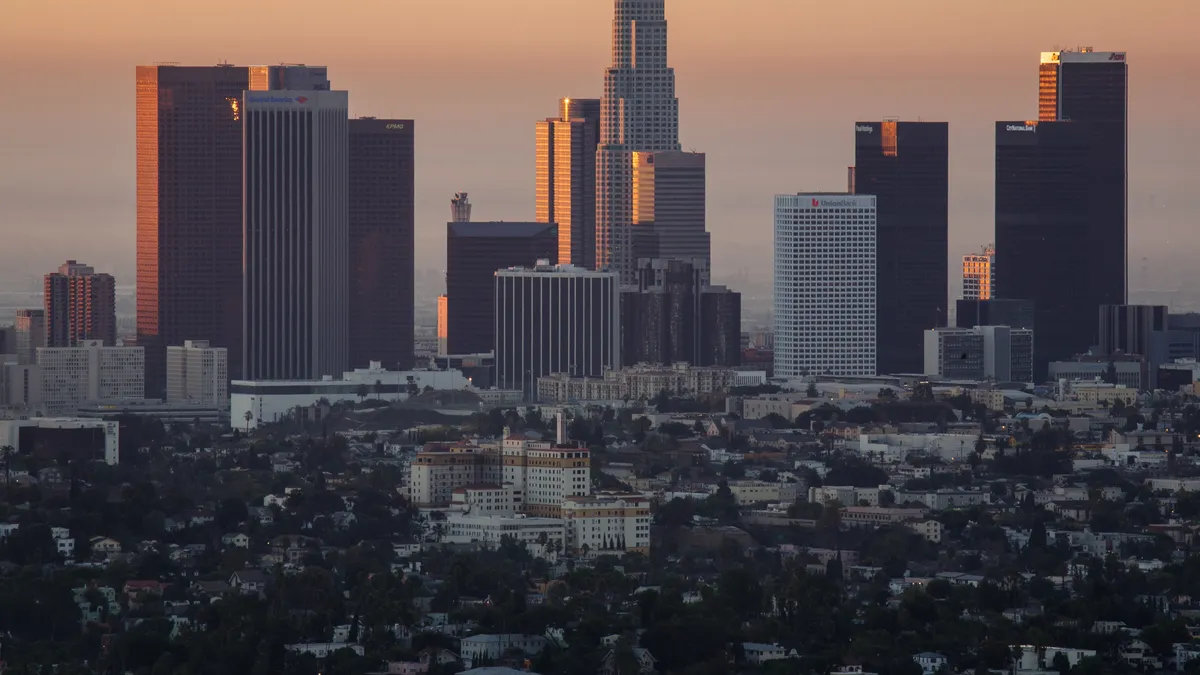Dive Brief:
- Environmental advocates and experts are criticizing California’s proposed climate scoping plan — a sweeping roadmap that outlines how the state intends to become carbon neutral — for being overly dependent on carbon dioxide removal technologies.
- The California Air Resources Board is in the process of putting together the 2022 update to its scoping plan — which tracks the state’s progress toward its 2030 decarbonization goals, and charts out a pathway to achieving carbon neutrality by 2045 — and released an initial draft in May.
- But the path to carbon neutrality in that plan “would depend on nearly 100 million metric tons of carbon removal in 2045, and this is calculated after large-scale deployment of carbon capture and storage,” Daniel Barad, a policy advocate with Sierra Club California, told regulators at a hearing Thursday. “Not only is this risky to rely so heavily on carbon capture and removal, but these technologies do not deliver criteria emission co-benefits that replacing sources of pollution with zero-emission technologies do,” he said.
Dive Insight:
CARB developed its first scoping plan in 2008, and is required by state law to continue to update it at least every five years. Among other things, the draft 2022 plan’s proposed scenario includes reducing electric sector greenhouse gas emissions to 38 million metric tons in 2030 and 30 MMT in 2045, and achieve all electric appliances in new residential and commercial buildings by 2026 and 2029, respectively.
The energy sector in particular has historically outperformed its decarbonization goals, California Public Utilities Commission President Alice Reynolds said at the hearing. It has also been working on building resilience, including by installing a 20-fold increase in grid-scale energy storage over the last two and a half years — from around 200 MW to 4,000 MW – despite the pandemic and supply chain challenges, she said.
“But the hard work really is yet to come. We need to think about how the energy sector can continue to grow – in fact, double or triple – to meet electrification and decarbonization goals,” Reynolds said.
Two of California’s utilities – Southern California Edison and Pacific Gas & Electric – voiced support for the proposal.
The proposal “balances decarbonization with affordability, a key concern given that achieving carbon neutrality should not negatively impact Californians that have historically been harmed the most by the impacts of climate change,” David Asti, a principal with Southern California Edison, said at the hearing.
But the draft plan’s emphasis on carbon removal technologies was a point of contention for some groups. Carbon removal and sequestration technologies can take various forms – for instance, carbon capture and storage, a technology that can be paired with emitting facilities, and essentially captures, compresses and sequesters the carbon emissions from them. CARB’s proposed scenario envisions using carbon capture and sequestration in certain sectors, like petroleum refineries and cement production facilities.
The plan also considers carbon dioxide removal from ambient air, or direct air capture, which it says will be needed to deal with residual emissions from different sectors in 2045.
Earlier this week, more than 150 organizations penned a letter to the agency criticizing the plan for being inadequate, and saying the plan should "avoid the pursuit of a so-called carbon neutrality that will prop up industry scams like carbon markets, carbon capture, bioenergy, hydrogen and direct air capture."
“CARB must chart a path to carbon neutrality that prioritizes near-term direct emissions reductions,” Barad said at the hearing. “Climate change is worsening every day, and millions of Californians continue to breathe the most unhealthy air in the country.”
Michael Wara, director of the climate and energy policy program at the Stanford Woods Institute for the Environment, who was commenting in a personal capacity, also raised concerns at the hearing that the plan relies on emerging technologies with “significant technical, economic and timeframe risk of deployment, and we would urge the board to think about how to incorporate uncertainty along those timeframes into their analysis.”
In particular, he said, the scoping plan precisely specifies the cost of carbon dioxide removal in 2045, “while we believe there’s still significant uncertainty in those costs.”
The plan’s reliance on nascent carbon dioxide removal technologies could jeopardize California’s climate goals, Mark Specht, Western states energy manager with the Union of Concerned Scientists agreed in a statement. He added that it is alarming that the draft scoping plan also calls for the retention of existing gas plants, as well as building new gas power plants, by 2045.
Virgil Welch, executive director of the California Carbon Capture Coalition, said at the hearing that it is clear that any reasonable scenario in the climate plan is going to require carbon capture technologies.
“We have a number of industries across a number of sectors in the state that right now can start to deploy these technologies as we start to ratchet down emissions,” he said.















